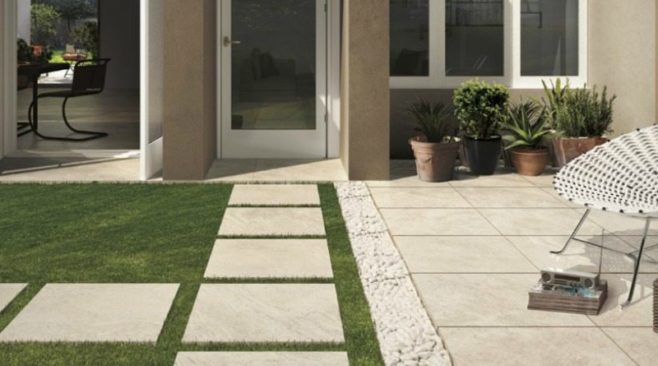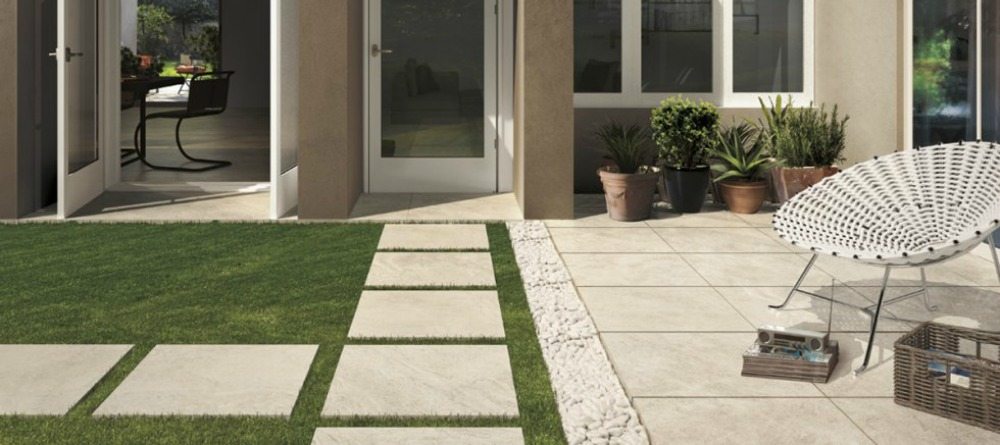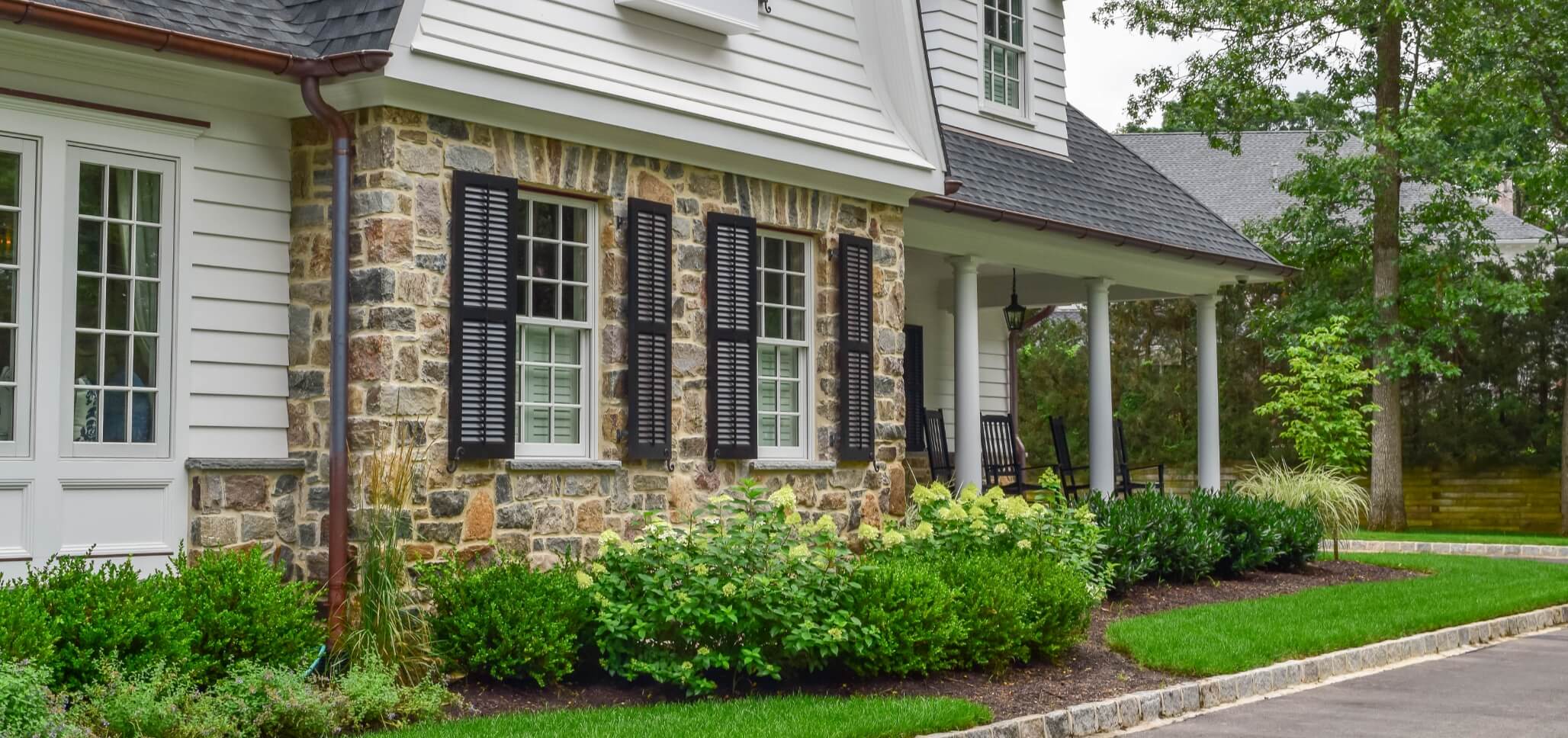It used to be that northern NJ homeowners really had only one option for beautifying their hardscapes with an alternative to natural stone: concrete. While concrete pavers and slabs are stunning, reliable, affordable and extremely popular, though, some people prefer having the choice to work with porcelain slabs instead.
Porcelain slabs are heavy load bearing, durable and are extremely long-lasting – not to mention sleek, elegant and budget-friendly. What’s not to love? If you’ve been thinking about introducing Techo-Bloc porcelain pavers to your northern NJ property, this is the post for you.
After all, knowing that you like the look and characteristics of a specific type of slab is only half the battle. From here, you’ve got to know how you’d like to arrange the slabs and have a means of keeping the individual units in place.
Which type of grout is right for working with porcelain slabs? Are there differences in how the grout should be applied to porcelain vs concrete? Read on for the answers to these and other important questions.
Porcelain Slabs and Grout: What You Need to Know
Choosing the right grout for your hardscaping project is a pretty big deal. After you’ve worked so hard to plan the design, layout and specific patterning of your Techo-Bloc porcelain slabs, the last thing you want is for the units to shift out of place.
Not only will this detract from the aesthetic value of your property, but it also has the potential to significantly decrease functionality and create safety hazards. Slabs that have settled or moved out of place, for example, could increase the trip-and-fall potential throughout your hardscape.
Making sure that you install the slabs with the use of a reliable, long-lasting grout will help to prevent problems like these from happening. This will ensure that you’re able to get the most use and enjoyment out of your outdoor living space in the many years ahead.
The task of selecting the right grout for your Techo-Bloc porcelain slabs, then, should not be taken lightly. After years of acting as an authorized Techo-Bloc dealer, we’ve seen numerous homeowners and contractors make the mistake of choosing the wrong material for the task at hand.
Trying to get by with an unsanded grout, for example, will almost always yield disastrous results. This is because non-sanded grout is only designed to work in extremely small joints. As a general rule, you want to make use of this type of joint adhesive strictly in cases where the joints will be smaller than 1/8″ in width.
In the majority of cases, Techo-Bloc slabs will be spaced further apart, and this will demand a stronger type of grout. An epoxy, on the other hand, is quite strong and reliable, but still might not be the best choice for porcelain slabs.
This is the most expensive joint filling option, and unless you’re able to match the coloring of your porcelain slabs to a T, you could seriously detract from the overall look and beauty of your completed project area. So what do we recommend? When it comes to working with Techo-Bloc porcelain slabs, we offer two recommendations: polymeric stabilizer sand or no grout at all (where applicable).
Polymeric Sand
Polymeric sand is, by far, the most commonly used grout for Techo-Bloc porcelain slabs throughout northern NJ. This is a specific blend of sand and polymers that, when activated by water, work to harden and hold the porcelain slabs in place.
The polymeric sand is gentle enough that it won’t scratch or damage the surface of the porcelain, and its natural tones and textures will look stunning when contrasted with the colors available from Techo-Bloc’s many lines of porcelain slabs.
Polymeric sand remains efficient and functional for long periods of time, and is very affordable and simple to install and maintain.
No Grout
Many northern NJ homeowners have fallen in love with the idea of creating paths, walkways, and even patio areas that feature a blend of both Techo-Bloc porcelain slabs and vibrant, green grass.
Instead of installing a solidly paved area, these folks space out the slabs in patterns throughout the grass, creating the look of “blocks” of both grass and porcelain. This is an excellent way to enjoy both a landscape and a hardscape without being required to fill in joints with any type of grout.
Tips for Introducing Grout to Techo-Bloc Porcelain Slabs
When installing your Techo-Bloc porcelain slabs, you’ll need to fill in the joints as you go. As you lay each slab down, you’ll need to walk on top of them to press them into the sand, and introduce a polymeric stabilizer between units.
After the installation has been completed, you’ll also need to pour polymeric sand on top of the slabs and then work the grout material into the joints with a broom. Be sure to strictly adhere to any manufacturer specifications for working with the polymeric sand.
Finally, avoid the use of a vibrating plate to install the slabs and set them into the polymeric sand. While projects with concrete pavers and slabs often require the use of a vibrating plate, this can actually be damaging to porcelain, so you should never go this route.
Installing Techo-Bloc Porcelain Slabs in Northern NJ
Ready to get started on your project with Techo-Bloc porcelain slabs? Braen Supply is the leading Techo-Bloc supplier in all of northern NJ and its surrounding areas. We carry a full inventory of Techo-Bloc 20mm porcelain products, including those from the Brave, Etic Pro, Block, Seastone, Sunrock and Trust style families.
Our team of experts will work with you to make sure that you select the right type of porcelain slabs for your home, and will make sure that you walk away with the right type of grout for the installation process.
Our Techo-Bloc slabs and polymeric sand are available at the lowest prices around and can be picked up or bulk delivered to areas throughout NJ, NY, NYC and PA.


